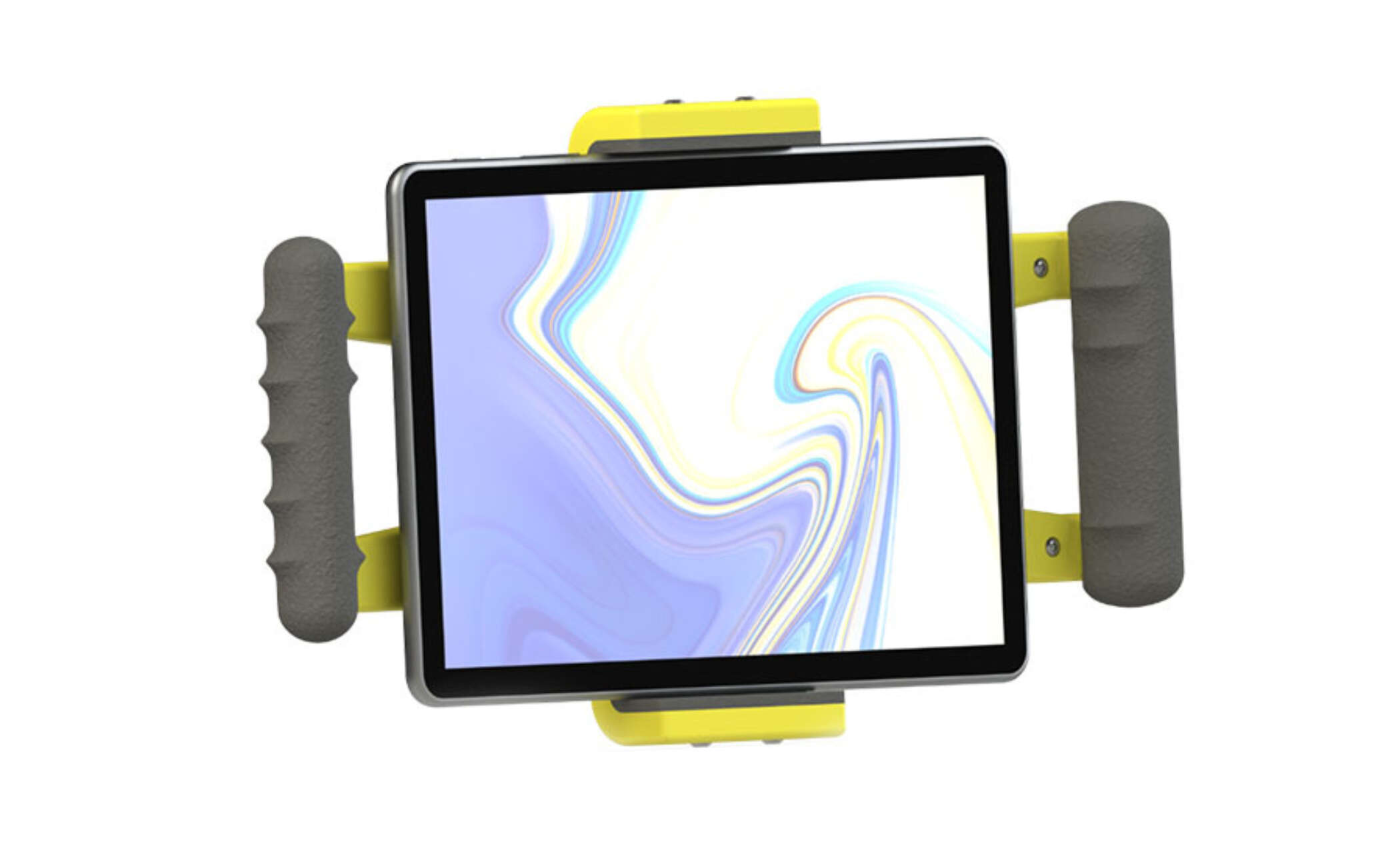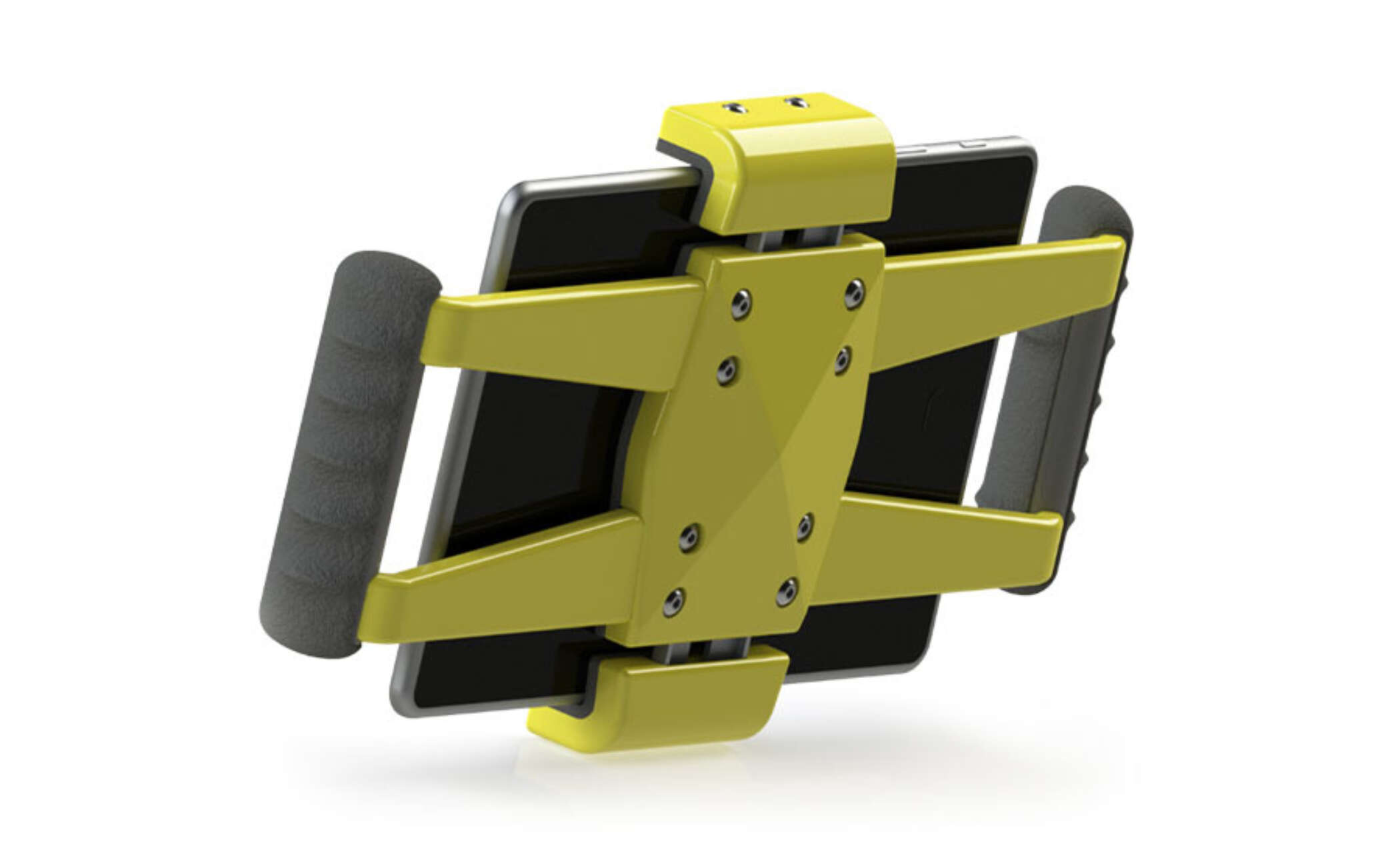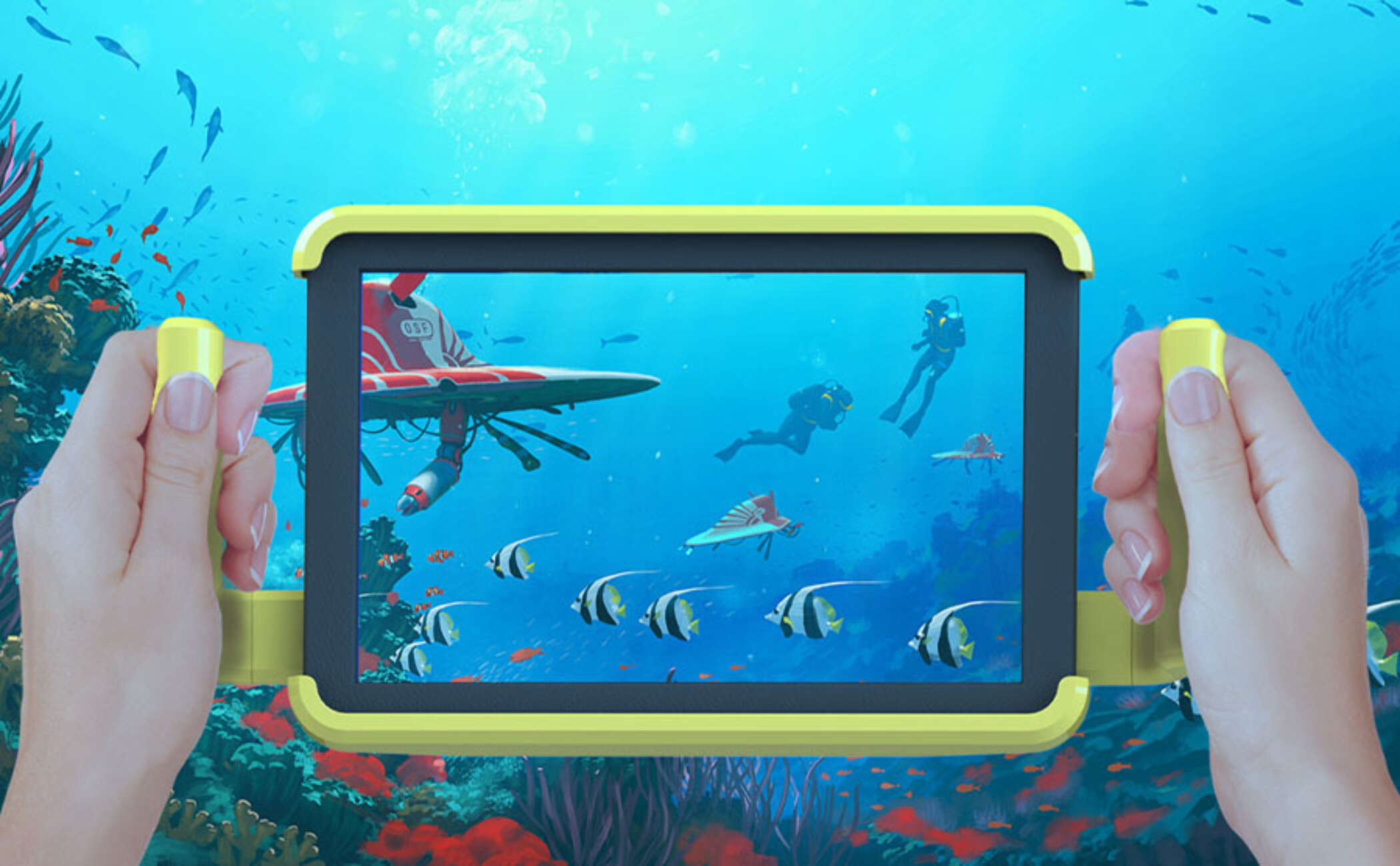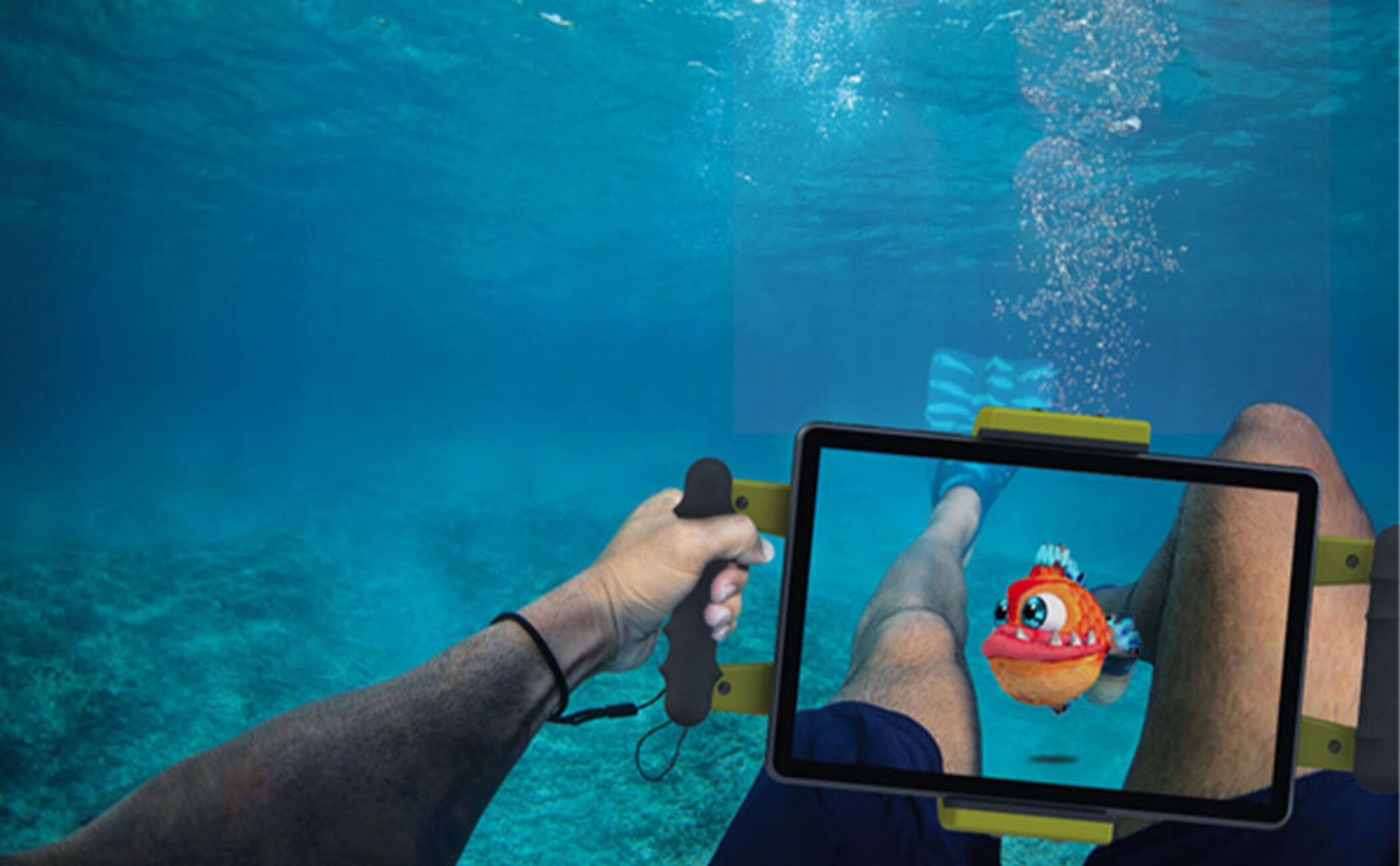

Augmented Reality
Augmented Reality (AR) has global appeal, particularly in the leisure and entertainment sector. This technology is the perfect way to add an extra dimension to rides and experiences. An innovative technology which enables virtual objects to be placed in reality. Augmented Reality is an immersive, interactive experience based on the real world. AR brings the impossible seamlessly to life and gives visitors an unique experience.
Picture this: you are sitting in a dark ride - scary creatures appear from nowhere – you need to eliminate them as they head straight towards you. Alternatively, you find yourself in a room, having to catch a mass of spiders as they crawl over the walls. What about a water park, when the bottom of the swimming pool changes into a colourful coral reef, where you can swim amongst exotic fish and ancient shipwrecks? And the best thing about all of this is that you are in a completely different world but, at the same time, you can still see the real environment and reality.
The use of new technologies, such as AR and Visual Reality (VR) in the leisure industry is inevitable. Younger generations are becoming more demanding when it comes to content and gameplay. That is because they encounter this regularly in their immediate surroundings, so expect this during their leisure time too.
We believe in the power of Augmented Reality in the leisure and entertainment sector. We therefore constantly work on the development and application of different AR systems and technologies for theme parks, Family Entertainment Centres (FECs), museums and zoos.
‘We create customised AR experiences. From audio-visual shows to interactive and educational experiences and rides’
Use the photo slider below to discover the incredible effect of Augmented Reality in attractions.
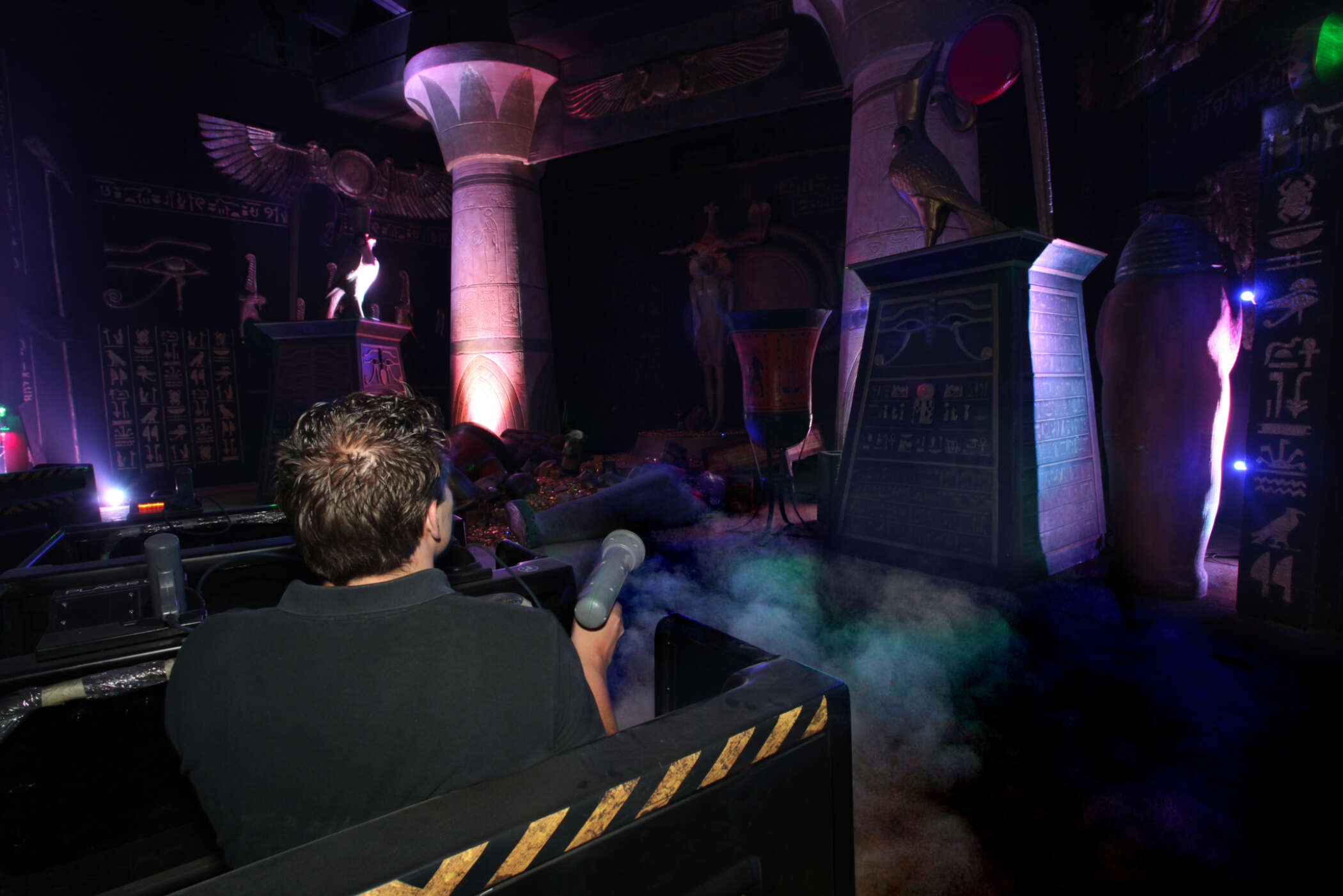
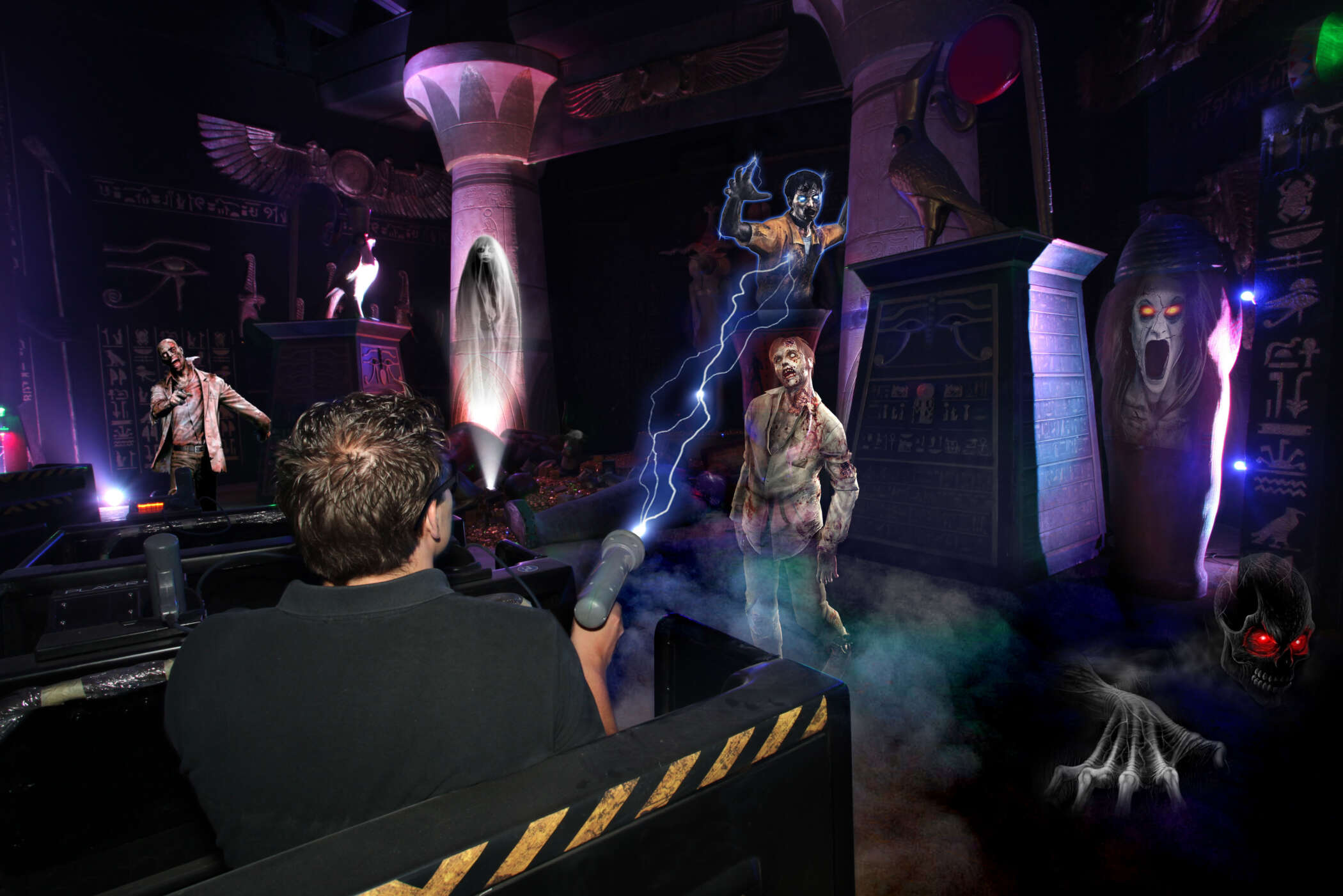
Why Augmented Reality?
AR makes visitors feel part of the unfolding story, or the world they occupy. The use of AR has a WOW factor and the experience is unforgettable. Although AR has been around for some time, it is used relatively little in theme parks and other LBE (location-based entertainment) organisations. This is because the technology behind the AR was/is still being developed. Because our interactive systems have been built to accommodate AR, we are able to offer customised Augmented Reality solutions, which enables theme parks, FECs, museums and zoos to differentiate themselves from the competition.
Today’s visitors, especially families from younger generation, are looking for a balance between culture and new and unique experiences during their leisure time. Innovative technology, such as AR, increases visitor numbers and can help to reach a wider audience.
AR makes the invisible, visible. Images from the real-world environment can be enhanced with information, or images imperceivable to human senses can be created. For example, dinosaurs or knights and pirates - all popular and historic themes, with stories to be told in a unique manner using AR. AR leads to faster and improved retention of information and is therefore perfect for the creation of educational experiences. This, in turn, can potentially be combined with entertainment.
AR per sector
Augmented Reality can be used in a whole variety of ways in different sectors, such as museums, theme parks, Family Entertainment Centres and zoos. From small-scale experiences to large rides, such as dark rides, AR can offer significant added value.
AR for theme parks
AR allows us to write our own rules about how visitors see the world and how they respond to it. By implementing this technology in the theme park industry, we can create unique ride experiences, breathe new life into old rides, improve the time spent queuing, provide an active way of sharing ride information and spark the imagination of visitors. AR complements the exact thing that theme parks were created for: adding magic to the real world. In a way that takes us by surprise, it combines physical and digital aspects, allowing a theme park to create unique experiences.
AR for museums
Augmented Reality is also a perfect addition for museums as it can attract a wide audience through interactive experiences and family-friendly games. It offers opportunities to attract younger generations to the museum, groups that are usually underrepresented.
Any work of art exhibited in a museum can become an augmented model. Imagine an app that gives visitors an entirely live view of extinct animals or historic buildings. This enables museums to bring exhibitions and tours to life and to offer visitors an intense and educational experience.
AR for zoos
Zoos always have a good map and are well signposted, but Augmented Reality could be used to make this more interactive and unique. For example, an alternative might be interactive navigation in the form of digital animal characters who show visitors the way and which visitors can play with.
Another unique example could be Augmented Reality quests to find rare, endangered 3D animals. Learning elements could also be added to this quest, by sharing information about these rare animals.
Augmented reality in rides and experiences
We are constantly working on the development and application of different AR systems and technologies. In recent years, we have developed new interactive systems that, in combination with AR, offer a great opportunity for highly innovative ride/experience concepts.
AR Walkthrough
In an interactive walkthrough, visitors use a tablet, telephone or smart glasses (AR glasses) to bring the Augmented Reality world to live. This AR walkthrough can be implemented anywhere. A historic guided tour of an old castle – enabling visitors to step back in time and see the castle as it used to look in all its glory. Or what about a museum, where additional information about a new exhibition can be presented in a unique manner using AR. Think about bringing the museum to life where, for example, art, buildings, plants or animals become 3D objects/creatures and stand, float or fly right in front of you. Information is going to be brought in a visual and appealing manner which enables information to be comprehended easier for visitors.
These are just a few examples, where the focus is on education. Augmented Reality can also be used in countless ways in theme parks and FECs. A good example of this is a ghostly walkthrough. Using augmented reality glasses, in combination with our interactive shooters, visitors can shoot at ghosts and scary creatures that aren’t actually there! Our interactive system is very unique and ensures that all physical objects in the room, as well as creatures in the AR world, can be targets. During the experience, AR targets, ghost projections and concealed targets are randomly alternated. Visitors will therefore discover something new every time they visit.
AR Dark Ride
In an AR Dark Ride, wearable augmented reality is used. For example, smart glasses which display the digital layer immediately in front of the wearer’s eyes. With our newest interactive technology it is possible to interact with both the physical scenery in the ride and the virtual elements shown on the smart glasses with AR technology. There are fantastic future opportunities for integrating AR in dark rides, in combination with our interactive systems. To create this the AR glasses still need some additional development.
PoolAR Expedition
Let visitors explore the wonders of the ocean! Find the most adventurous shipwrecks and their treasures or explore the ruins of Atlantis and the many secrets it holds.
The PoolAR Expedition transforms any swimming pool into an underwater world ready to be explored. The underwater world is not only a passive environment, the swimmers will also be able to interact with objects underwater. This makes the PoolAR Expedition a free roaming AR game. Swim to find treasures and collect them to earn as much money as you can. Find mysterious objects or funny underwater animals that react on your presence.
The PoolAR Expedition is an underwater AR experience using a mobile device like a tablet. Because these tables are water and shock resilient, they can be used anywhere and by anyone.
AR Photo Booth
An AR photo booth allows users to have their photo taken with realistic, animated characters and to communicate with them through a totally unique and immersive experience. Characters might include the theme park mascot or famous figures based on IPs. But visitors could perhaps pose for a photo with popular performers, movie heroes or sporting legends, or even enjoy a short dance with them.
The AR photo booth offers the ultimate entertainment solution for every location and space. The system creates instant snapshots which can immediately be shared through email or social media. If the snapshot is shared on social media, a hashtag can also be added to improve online brand awareness. The snapshots could also be printed on-site, which could be converted into valuable brand and revenue opportunities.
These are just a few of the many ways in which AR can be used; the possibilities are endless! Contact us and we would love to take a look at the best way of using AR within your organisation.
Difference between AR and VR
The main difference between Virtual Reality (VR) and Augmented Reality (AR) is that AR uses the real-world environment. These images are combined with computer graphics and/or animations. This gives users more of a feeling that the virtual part belongs in the image that they see. There could be, for example, a room in which virtual spiders are crawling up the walls.
With VR, users are in a completely virtual world and the real world is no longer visible. There is therefore no visual information belonging to the real world as this has been replaced by a virtual world. This gives users the feeling that they are in a different reality.
One advantage of AR is that the real world is still visible. Instead of ‘relocating’ the visitor to an entirely virtual world (which would be the case with VR), it’s advisable to keep visitors attuned to what the park has to offer. That’s because a VR world can be created anywhere, including outside a theme park. Plus, from a safety point of view, in many cases it’s important for the real world to remain visible; a simple example would be to prevent visitors from accidently walking into things.
Get in touch
Showcases





